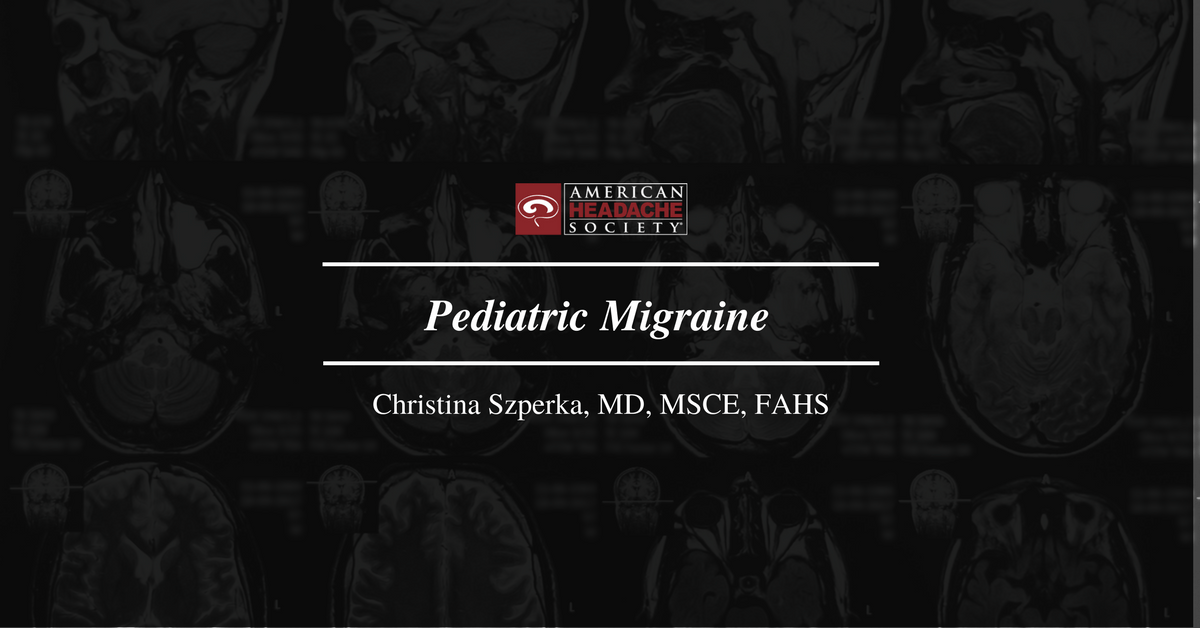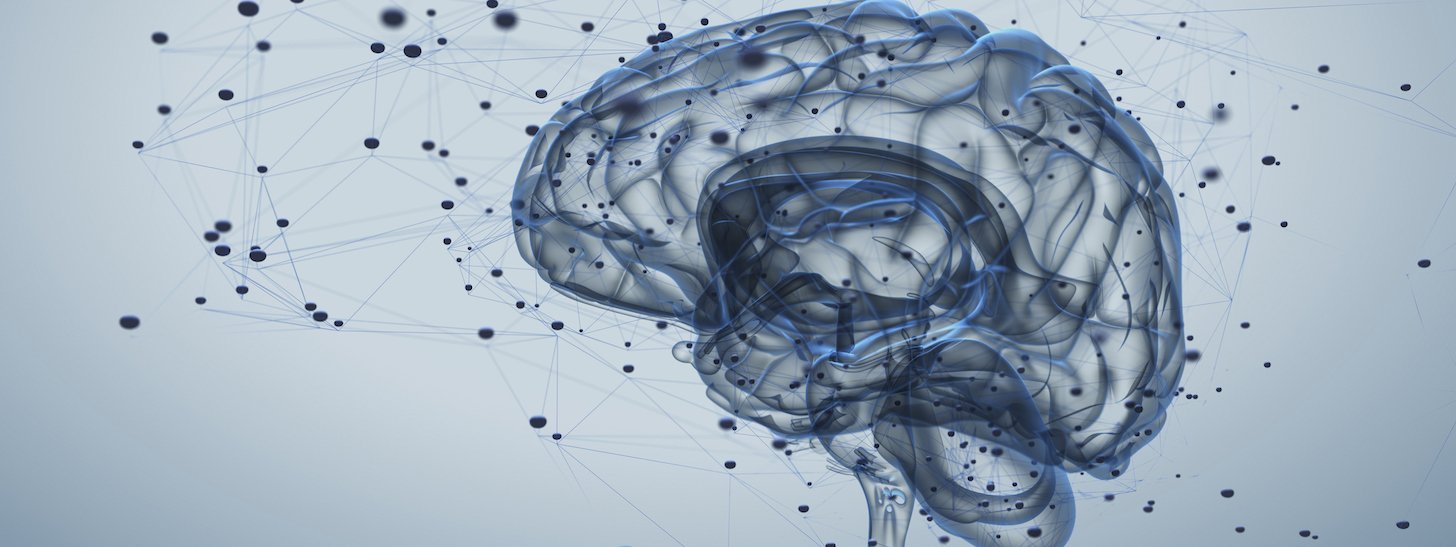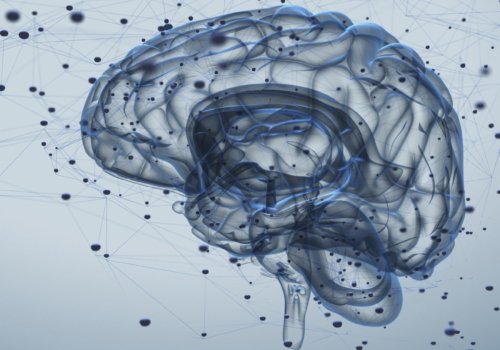
Pediatric Migraine: Q&A With Dr. Christina Szperka
Migraine in children is often undiagnosed and untreated. Dr. Christina Szperka on the prevalence of pediatric migraine and how treatment options for kids differ from how we treat adults
Christina Szperka, MD, MSCE, FAHS is the director of the pediatric headache program at the Children’s Hospital of Philadelphia. She spoke with us about her work with children with migraine, and offered advice for parents seeking guidance on how to treat headache in kids.
What has your research revealed about pediatric migraine?
There are a lot of things we’re learning about pediatric migraine. If you look back 50 years ago or so, all we knew really was that children had headaches. At that time here were some very important studies, which demonstrated that children have headaches to fairly high prevalence. Over the years we’ve learned more and more about these children: we’ve learned that migraine is very common in children. We’ve learned that migraine occurs in about single-digit percentages of school aged kids. It becomes much more common through adolescence. And we’ve learned that migraine can be fairly disabling.
It must be really challenging for parents who are trying to find treatment for their children.
Absolutely. I think there’s a lot of stigma around migraine. There is a lot of trouble where a child can have an individual episode, so everyone will say, “Oh, I have migraines. I know what that means.” But the problem is, within an episode, the child can have profound pain. They can have nausea. Yet, we’re asking them to go through a school day. We’re asking them to function. We ask them to do those things because over time, we feel that it’s more helpful, but it’s absolutely very difficult for that child to get through the day sometimes.
What is the typical age when pediatric migraine might reveal itself?
We’ve learned that children can start with what we think of as “migraine equivalents” even in infancy. There is evidence that colic may essentially be a migraine equivalent in babies. Then you move forward, and you’ve got things like cyclic vomiting, where children have a lot of vomiting. Abdominal migraine, where they have significant abdominal pain. Think of those as essentially migraine equivalents in childhood. The classic presentation of a migrainous headache can also start as young as toddlers, but is much more common as age increases. Most of my patients are teenagers. Similarly, there’s a difference in boys and girls over the ages. In younger children, boys may actually have a slightly higher rate of migraine than girls, but are very, very close. Whereas after puberty, migraine in girls becomes about three times as common as boys, mirroring the adult prevalence.
What are the different symptoms? How do migraine symptoms vary between children and adults?
There are children who would have a more classic migraine presentation, very similar to what you think of as an adult presentation, where pain is a predominant symptom. But in younger children, we also see some differences. We see more common GI symptoms, so vomiting and belly pain are often very common, sort of hallmarks of migraine symptoms in young children. But we also see things like a difference in the duration of the headaches. Migraines in younger children are sometimes much shorter. Sometimes they’re so short that we can’t even really treat them with a medication, because the child will develop severe pain and belly pain or nausea, then vomit, and then the episode’s over. It’s almost so quick that it’s hard to treat.
We also sometimes will see more commonly that children have bilateral pain: Whereas an adult will classically have one-sided headache, children more often report that they have bilateral headache.
Based on what we know today, what can you do to prevent or treat migraines?
If we have a child who comes in and describes that they have migraines, the first thing we do is reassure, and make a diagnosis. Many of the families who walk in the door are really worried that there’s something seriously wrong with their child, that their headaches are caused by something like a brain tumor. The first thing we do is reassure. We explain with the statistics that a migraine is actually very common. It’s important to acknowledge that the child’s not making up their pain. They’re not lying. They’re not trying to get out of something. They’re having significant pain.
How do you approach treating children with migraine?
We usually then think about treatments as a three-pronged approach: Particularly in pediatrics, what we call our “healthy habits” are very fundamental. Things like making sure the child’s getting enough sleep, making sure they’re hydrated and making sure they’re eating consistently. Many teenagers stay up late because they’re working on their homework. They skip breakfast, then they take a nap in the afternoon. Just fixing their cycles and getting their cycle of their day-to-day schedule more consistent can be very, very helpful.
If they’re having frequent headaches, then we recommend a preventive treatment. There was a study recently published, which compared some of the more common medications we use. Amitriptyline and topiramate versus a placebo or a sugar pill. The results showed that about 50% to 60% of kids in each group got better. This has been a bit of a surprise to us because we’ve been using these medications for years. I think the interpretation is not to say we shouldn’t treat. It’s not to say there’s no role for preventive treatment in migraine because that’s absolutely not true. The interpretation within the pediatric headache community has been that something helped those children to get better. Something about being in the study, having the conversations about their healthy habits, treating their headaches acutely and taking something so that they were expecting to get better, helped them to get better.
So, we’ve got our healthy habits. We’ve got our preventive treatment. Then there’s acute treatment. If a child’s having an acute attack, we give them something to help them stop the attack.
What are the signs and symptoms that parents can look for that might be an indicator that their child has migraine?
Many of the characteristics of migraine in children are actually similar to those in adults. So usually the primary symptom is pain in the head. They often will report pain in the front of the head, and sometimes they’ll report pain all over the head. That will happen repeatedly. It may be provoked by something, or maybe out of the blue the child will report an onset of pain which will last for several hours and then will get better over time.
When the pain is present, there are often associated symptoms of sensitivity to light, sensitivity to sound, nausea, sometimes vomiting, and the child will feel uncomfortable doing things. So even something as simple as walking up the stairs or going through a day at school can make them feel worse. Certainly there are children who have what we call chronic migraine where essentially they have headache more days than not. The rates are probably around 1.5 to 2%, depending on exactly how you define that. So that’s not a common condition, but if you think about that, two out of every 100 children means that there are lots of teenagers out there who have very frequent headaches.
What could you tell pediatricians to help them understand pediatric migraine and how can they work with headache specialists?
Pediatricians are the gatekeepers for all medical care for these children—pediatricians, primary care physicians. It is very important that they recognize how to diagnose and how to treat migraine.
The first thing is what’s the cause of the headache. Most of the time, the feedback I’ve gotten from pediatricians is, “I need to make sure this isn’t something really serious, that I’m not missing a serious cause of headaches, something like a brain tumor, something like a meningitis.” So the first question is, how do I rule those things out? If the child’s having a new neurologic finding, or having a seizure in the setting of a headache, then you should be worried about that child. If the onset of the headache is abrupt and sudden, if they had no headache and then, boom, it spikes up and they have a headache, that’s more likely to be concerning. If the headache is in the occipital location—so in the back of the head—some studies would suggest that that is a risk factor for secondary headache. On the flip side, many children with migraine have occipital headaches, so that doesn’t in and of itself indicate a problem. But it’s something to give you pause, and to think about.
Then we move on to the “P’s.” We have positional headache, which is if the child feels worse lying down, or substantially worse upright. If there is a very clear difference in position, that can be a sign of a worrisome headache. Another is parents, for lack of history. Lack of family history comes out in studies as a risk factor for secondary headache. Then there’s papilledema. It’s important to do a very thorough neurological exam, including a fundoscopic exam, to make sure that the child does not have papilledema. The last ‘P’ would be pattern. For instance if the headache pattern is progressive over time. If you have a child who had no headaches and then over the course of a couple of weeks has a constant headache, I would be more concerned that there’s something serious going on in that child. It could, truthfully, just be a quick progression of migraine and we do see that, but that always gives me pause.
Then we talk about age. Any child who is younger, we think of as worrisome. This is partly because there may be an increased risk. There have been some small studies which have shown an increased risk of a serious secondary headache in younger children, but it also could be that it’s really more difficult to get a good history in a young child. So if you have a five-year old who gives you very, very classic description of episodic migraine that comes and goes, I wouldn’t be worried about that child. If you have a two-year old who has a new onset headache and the family can’t really give you much in the way of details, I would be more concerned in that child and would do more testing.
Those are all the different red and yellow flags really to go through to think about what other causes of headache are there. If you are reassured by that conversation though, there’s a very high chance that that child has migraine. The rate of serious causes of headache is about 1%, so very, very low. We just went through all that conversation to say there’s a low chance that there’s something serious going on, and a very high chance that it’s migraine.
How can pediatricians treat migraine?
What I often tell general pediatricians is do something like start kids on some riboflavin or some magnesium, something that’s relatively benign that most parents are very willing to try and has a low rate of side effects. You could try them on a supplement if they’re having frequent headaches just to see along with your counseling, if that can help reduce the frequency of headaches.
The other piece is what to do acutely. The vast majority of children with migraine are going to have a lower frequency of headaches. Many of them aren’t even going to require preventive treatment, but they probably will require something in the moment. If you have an episode that’s lasting four hours and causing them to miss a half a day of school even once a month, that’s too much. You can give that child either a strong dose of an antiinflammatory or even a triptan medication to treat the headaches.
There are also a host of non-pharmacological treatments available. Without question, cognitive behavioral therapy, which includes biofeedback, has very strong evidence of benefit. Cognitive behavioral therapy is a technique that psychologists use to help reframe. In the middle of a migraine, you feel awful; The cognitive behavioral therapy will help you to reframe the approach.
Instead of saying, “I feel really awful right now, I can’t do anything,” you shift that to, “I feel really awful right now, but I want to go see my friends, and I want to get out of bed today, because that’s going to make me better.”
There are different techniques that actually can help to reduce the pain acutely as well. Breathing techniques for example, are things that can help in reducing the severity and the duration of the attack.Those different pieces together we think of as cognitive behavioral therapy, and there’s very strong evidence that cognitive behavioral therapy is effective.
Dr. Szperka is a member of the American Headache Society, a professional society for doctors and other health care workers who specialize in studying and treating headache and migraine. The Society’s objectives are to promote the exchange of information and ideas concerning the causes and treatments of headache and related painful disorders, and to share and advance the work of its members. Learn more about the American Headache Society’s work and find out how you can become a member today.


